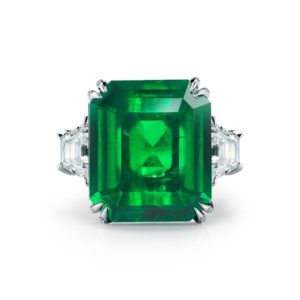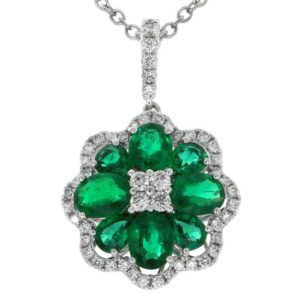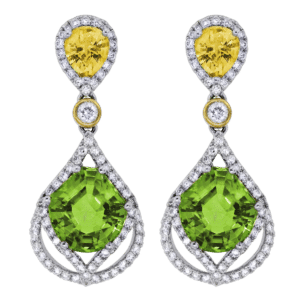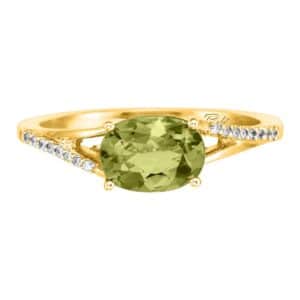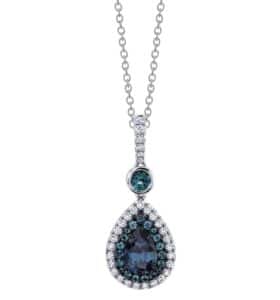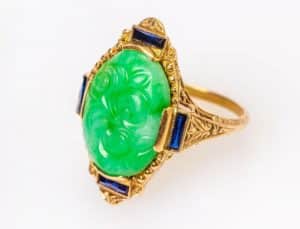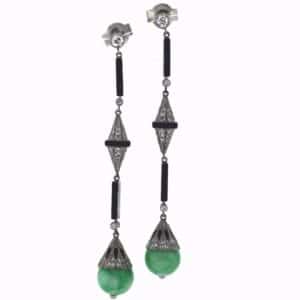Blog article courtesy of the American Gem Society (AGS) member, Malak Jewelers. Featured photos were contributed by members of the AGS.
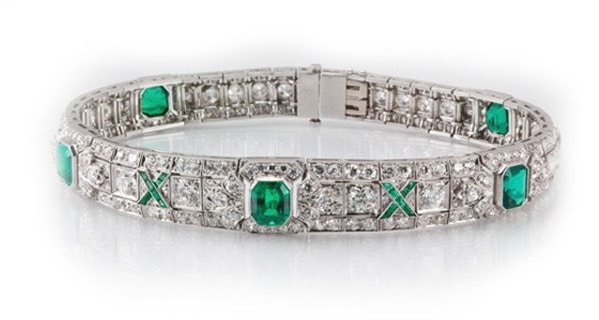
Throughout the world on March 17th, the streets fill with laughter, dancing, and most of all, the color green. St. Patrick’s Day began as a religious feast day observing the death of St. Patrick. But now it has turned into a variety of festivals across the globe, celebrating Irish culture with parades, special foods, music, dancing, and a whole lot of green.
If you are at a loss for what green to wear, or just want to add more green to your outfit, here are four of the most well-known green gemstones that will add sparkle and color to your St. Patrick’s Day.
EMERALDS
Emeralds were first found in Egypt in 330 B.C. The name “emerald” derives from the Greek word smaragdos, which was a term used to refer to the greenest of gems. Emeralds can come in varying shades of green and some feature blueish hints. The green color comes from trace amounts of chromium and vanadium in the mineral beryl. Its color symbolizes the rebirth and renewal of spring, and that is why it is the birthstone for the month of May. It’s also a popular gem for the 20th and 35th wedding anniversary.
Emeralds are typically formed in six-sided prisms, so they are naturally suited for the emerald cut for jewelry. They are mostly found in Colombia, Zambia, Brazil, and Zimbabwe. North Carolina is also a minor source for emeralds.
PERIDOT
Peridot’s name comes from the Arabic term faridat which means “gem.” Peridots were referred to as the gem of the sun by the Egyptians because of its bright color, which ranges from light to dark green and yellowish green. Most commonly it is seen in pale olive but can be bright golden lime. The mesmerizing color comes from trace amounts of iron within the mineral.
Peridot is the birthstone for August and the gem for the 16th wedding anniversary. The leading producer of peridots is in the San Carlos Indian reservation in Arizona.
ALEXANDRITE
The first alexandrites were discovered in Russia in the 1830s. The gemstone is named after Czar Alexander II. It is often described as “emeralds by day and rubies by night” because it is blueish, green in the daylight and purplish, red in incandescent light. Alexandrites change color because they are a rare variety of the mineral chrysoberyl. This gem provides dramatic proof of how a light source can affect the color of gemstones.
If you know of any June babies or a happy couple celebrating their 55th wedding anniversary, then alexandrite makes a treasured gift!
JADE- JADEITE
The names “jade” and “jadeite” come from the Spanish phrase piedra de ijada meaning, “stone of the lions.” They may sound similar, but they have totally different chemical, optical, and physical properties, with jadeite being the more valuable of the two.
Most of the classic jade (nephrite jade) comes from China, whereas Myanmar is the main source for jadeite. Jadeites are held in high regard throughout the Asian culture. And in China, nephrite jade is a symbol for purity, good luck, and prosperity. Jadeites come in varying shades of green. The most valuable jadeites are pure “imperial” green, which equals the intensity of emeralds.

Malak Jewelers is Charlotte, North Carolina’s premier direct diamond importer, supplier of loose diamonds, and custom design jewelry.
